Your relationship with your lender dictates a lot - whether you have the financial backing to get started, expand, diversify and more. For those looking to have more productive conversations with their banker, here are a few ideas from ag lenders themselves.
Meet the panelists:
Thad Tharp, Senior Loan Officer, Land O’ Lakes Finance Company
The core of what Tharp does is livestock lending, but if you can call it agriculture, he can finance it. He has customers across cattle country, from Idaho to Florida. Thad is a first-generation cattle producer based in Illinois. He and his wife run cow/calf pairs and stocker calves.

Beth Luebbering, Vice President, FCS Financial
Luebbering serves the southwest counties in Missouri. She specializes in ag loans and risk management tools and works with many livestock operations. Luebbering lives on a small part-time cow/calf operation in Lawrence County, Missouri with her two girls.

Colton Long, Senior Market President of Agribusiness Lending, Ag Texas
Long lives and works in the heart of cattle country in Amarillo, Texas. He leads the lending side of Ag Texas’s agribusiness department and primarily works with cattle feeders, grow yards and dairy operations. Long grew up with livestock and today, he and his family run some cattle of their own.

Question 1: For those who don’t have an established relationship, or are considering other options, what’s your advice for finding the right lending partner?
Tharp: Look around, because there are options out there beside the local bank in the world we live in. If you're looking for financing in the cattle world, find someone that understands the cattle industry.
Luebbering: Being an ag cooperative, the thing I can say is that we handle ag loans very specific to agriculture because we understand it. We are the experts in agriculture financing, and so I feel like that's different than a bank and that sometimes they don't look at it from a cash flow perspective. They look at it from a collateral perspective.
Long: Get to know your lender and your lending institution. That’s critical to finding a mutual benefit. If you're desiring to grow and you don't know how your lending institution is going to feel about it, for example, you may want to ask yourself, ‘Is this the lender that you want to be with long term?’
Question 2: Once you’ve landed on the right lender for you, how can you prepare for a productive conversation?
Tharp: Have your numbers (balance sheet, tax return/profit loss) up to date and ready to share when you are comfortable. Next, understanding your own numbers is important. When someone can show me what their historical cost of gains are on their fed cattle and/or they're feeding custom placement trends, what they can generate that way as far as the net margin, that's very important from a cashflow standpoint. I like working with people who can rattle off their cost of gain, ‘feeders 84 cents, fats $1.22’ and then can back it up with documentation. That is very valuable for them to know as it easily changes week to week.
Luebbering: Maintaining accurate records overall is going to be the biggest help. That goes from the performance of the herd to balance sheet income statements and cash flow. When you have that down on paper and you know for sure, you have that number to go back to versus trying to figure out where the notes might be or how you even obtained the notes.
As a loan officer, I'm trying to capture what my customer sitting across the desk is telling me. When they can hand me a printout and it has all that breakdown on it, I can go straight to my credit team for them to review and analyze and then put into our credit system for the historical analysis.
Long: One of the first things that we'll do is we'll take that monthly borrowing base, and check the collateral margin in it, and see if that's healthy enough to support the line of credit increase if that’s what they're requesting.
Growth has to be supported by not just what you're projecting a lot of times, but also where you're currently at. So we like to look at your historical trend. The past is going to tell you a lot about how they're going to perform in the future. If you have a murky past, growth might be slow. If you have a pretty decent track record, you might receive the benefit of the doubt. In agriculture, everybody understands that commodities are cyclical in nature, but there's volatility that we're not just producing widgets at a fixed margin here. Losses do occur, and it's difficult to find the right balance. But for growth, I really think that you need an adequate liquidity position.
Question 3: What’s the difference between someone who comes in prepared with historical numbers versus someone who has more scattered information?
Tharp: The guy or gal that's going to bring you their analytical numbers that they know the whole process is going to be half the time. Because if they're that good on the day-to-day feeding, they're probably going to be that good on updating a balance sheet and filing their tax returns on time. And there's not a doubt in my mind that they will be a more profitable entity in the long run because they understand the numbers.
Luebbering: Well, the difference is going to be just having effective financial reporting that allows them to monitor their progress. Whenever you have all the scattered information, it just doesn't show good trends and accurate financials, so it makes it difficult for us to support financial decisions. Having organized records allows for us to have crucial conversations because we have all of the numbers and there's no guessing. It makes us all better decision makers.
Long: I think when a customer has their stuff together financially versus not, number one, it indicates that he or she's an organized individual with good reports for managing their business. It indicates that they have graduated from just focusing on production to thinking like a business owner, too.
From there, it's going to save us lenders time in the underwriting, it's going to allow us to reach a point of loan approval, and loan closing quicker. It's probably going to result in better terms on the loan, too. Now, it's not uncommon that people have their stuff in a disarray and we're willing to work through that as long as they are, because sometimes you don't know what you don't know, and we're willing to help there, but they have to see the benefit of it.
Question 4: What’s your best advice for someone looking to expand what they’re doing with their ag lender?
Tharp: That can be one of the harder parts about being a producer. You have to be good at husbandry, technology, bookkeeping, capital allocation, analytics, marketing, and don’t forget your family. The market moves every day and there is a lot of noise to it. Being able to sort through all that and make a decision can be daunting. So, to me it's about putting together a good team to help carry the load. Utilize an accountant, hedging company and LRP insurance, your vet, as well as your lender. Accurate communication is key! I have done more increases in the last 12 to 18 months than I've ever done before. Those increases come from how's your working capital doing? Are you gaining ground in an equity position and cash flow? What is your current hedging or LRP coverage on the inventory? Those are the major drivers. A management software like Performance Beef forces you to actually see if you truly made money on a pen of cattle.
Luebbering: Obviously accurate record keeping from balance sheet, cash flow statements. Understand your operation, and then run those through all the various scenarios. Risk is inherent, it's agriculture. And so if you utilize a form of risk management such as livestock risk protection, that's going to help protect yourself in those declining markets. And then be open and honest with your lender. Talk to them about what you want to do, talk to them about where you're at, and then work together with them to make decisions so that you can have the best outcome.
Long: Not all lending institutions are the same, so I think if you're negotiating with someone, it's helpful if you kind of understand the other party's position, what's important to them, what bothers them. The more you can understand that, the better you can negotiate and find a mutual benefit.
Building a team of experts, consultants and tools will help you streamline all the information lenders request. It will also likely uncover ways to run your operation even better.
Learn more about software like Performance Beef and how it has helped many cattle producers grow and improve their operation.
CHECK OUT PERFORMANCE BEEF FOR YOURSELF
Our digital demo walks you through popular functions in our app, helping you visualize how it can easily become part of your day-to-day tasks.

